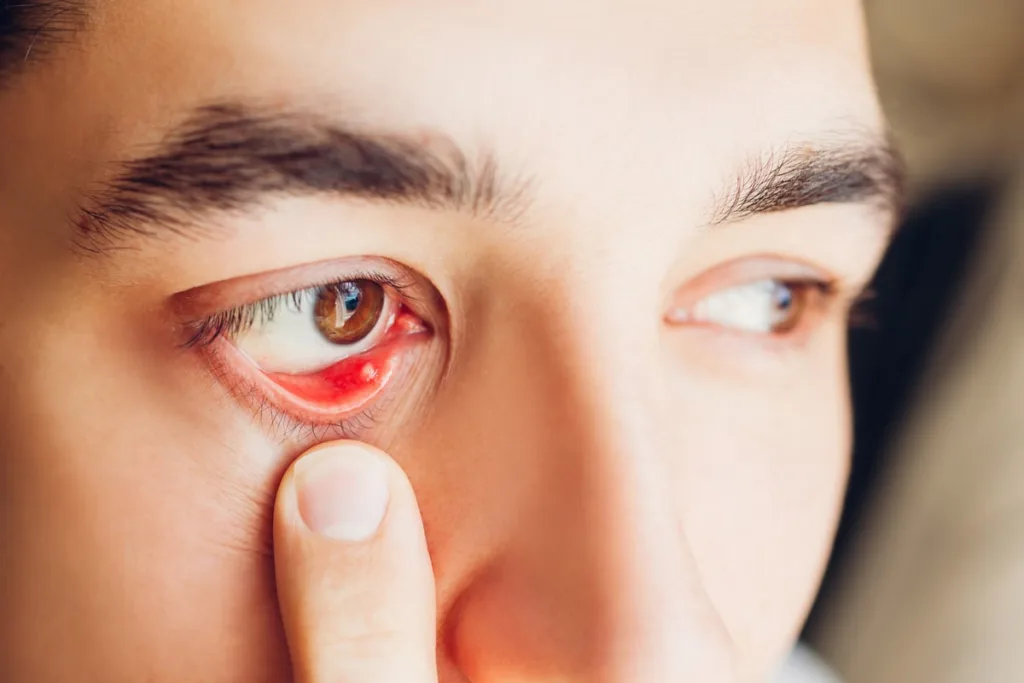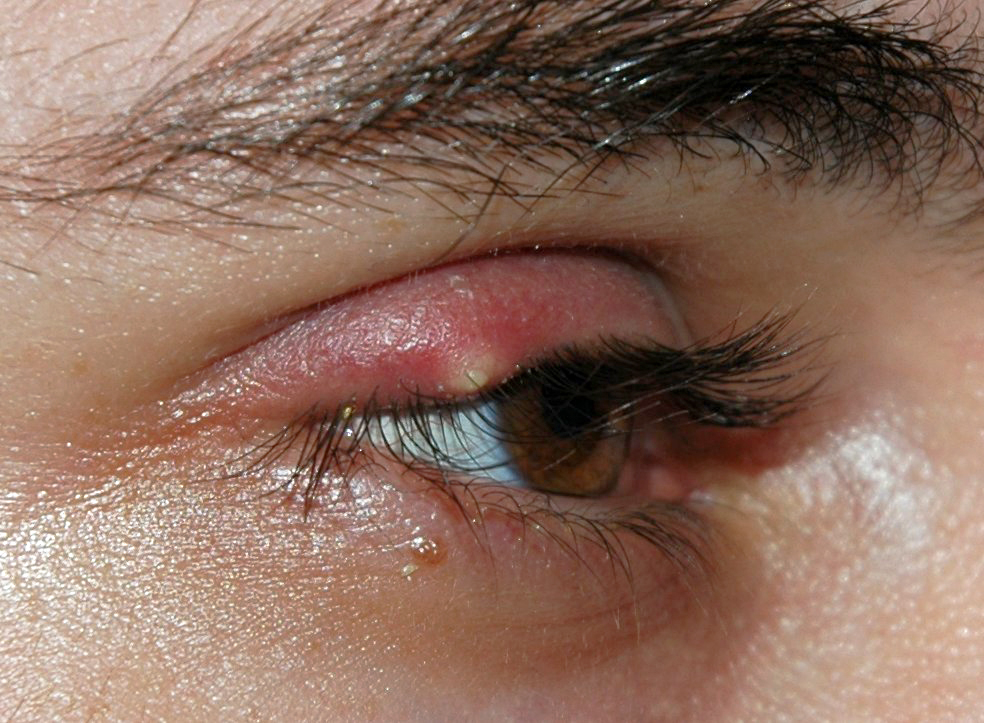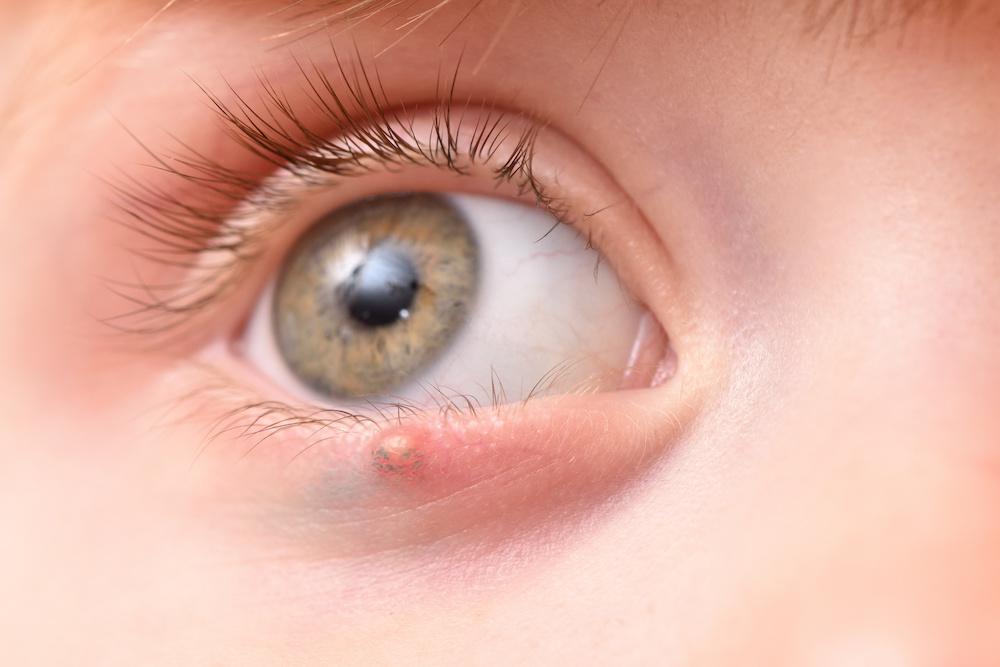Styes are a common eye condition that can be uncomfortable and unsightly. They are typically caused by a bacterial infection of the oil glands in the eyelids, and they can cause redness, swelling, and pain. While styes are often associated with these symptoms, many people wonder if they also cause itching.
The short answer is yes, styes can itch. However, it’s important to note that not all styes will cause itching, and the severity of the itch can vary from person to person. Itching is not typically the main symptom of a stye, but it can be an additional symptom that accompanies the swelling and pain.
The itching associated with a stye is usually caused by the inflammation and irritation of the eyelid skin. As the stye grows and becomes more inflamed, it can cause the skin around it to itch. This itchiness can be mild or severe, and it may be accompanied by a burning or tingling sensation.
While itching may be uncomfortable, it’s important to avoid scratching or rubbing the affected area. This can furthr irritate the skin and potentially spread the infection to other areas of the eye. Instead, you can try using a warm compress to reduce inflammation and relieve itching. You can also use over-the-counter antihistamines or topical creams to soothe the skin and reduce itching.
If you’re experiencing severe itching or other symptoms in addition to the stye, it’s important to see a doctor. They can examine your eye and determine the underlying cause of your symptoms. They may prescribe antibiotics or other treatments to help alleviate the discomfort and speed up the healing process.
In summary, styes can cause itching, but it’s not always a symptom. If you’re experiencing itching or other uncomfortable symptoms, it’s important to take steps to relieve the discomfort and avoid further irritation. With proper care and treatment, most styes will heal on their own within a week or two.
Treating an Itchy Stye
To stop itching caused by a stye, there are seeral home remedies and over-the-counter treatments you can try. One effective way is to use a warm compress on the affected area, as it helps to soothe the itching and reduce inflammation. You can also clean your eyelid with mild soap and water to remove any dirt or debris that may be contributing to the itching. Another option is to use a warm tea bag, as the tannic acid in tea can help to reduce inflammation and soothe itching. Over-the-counter pain medication can also help to relieve discomfort and itching. It’s important to avoid wearing makeup and contact lenses, as they can irritate the stye and make itching worse. Antibiotic ointments can also be used to treat styes, and massaging the area can help to promote drainage and reduce itching. If your stye does not improve with home remedies, it’s recommended to seek medical treatment from your doctor.

The Duration of Itching from a Stye
A stye can cause itching, but the duration of the itching can vary from person to person. Itching usully occurs during the initial stages of a stye when the eyelid is swollen and red. Typically, the itching sensation lasts for a few days and subsides as the stye begins to heal. However, in some cases, the itching sensation may persist for a longer period of time. It is important to avoid rubbing or scratching the affected area, as this can cause further irritation and prolong the healing process. If the itching sensation is severe or persists for an extended period of time, it is recommended to consult a healthcare professional for further evaluation and treatment.
The Stages of a Stye
A stye typically goes through a few different stages as it develops and heals. It typically begins as a red, tender bump that can feel sore and irritated. This bump may slowly increase in size as it fills with pus and other fluids. After a few days, the stye will usually come to a head, meaning that a small amount of clear or yellow fluid will collect at the top of the bump. At this point, the stye may feel even more tender and uncomfortable. Eventually, the stye will break open and drain on its own, which can provide some relief from the discomfort. After the stye has drained, it will typically begin to heal on its own, and the swelling and redness should gradually go down. Most styes will heal completely within abut a week, although some may take a bit longer to fully resolve.
Signs of a Stye Healing
The signs of a stye healing include a decrease in swelling and redness around the affected area. The bump may become smaller and less tender to the touch. Additionally, you may experience less discomfort or pain as the stye heals. After several days, the stye will typically rupture and release pus, which is a sign that it is healing. As the pus drains, the bump should continue to reduce in size until it disappears completely. It is important to note that if you experience any changes in vision or if the stye does not heal after a week or so, you should seek medical attention as it may be a sign of a more srious condition.
Causes of Stye and Itching
Styes are typically caused by a blockage in an eyelash follicle or oil gland. This blockage can occur due to excess oil, debris, or bacteria accumulating in the area. In some cases, styes can be a complication of blepharitis, which is an inflammation of the eyelid. Itching can also be a symptom of a stye, which may be due to irritation caused by the blockage or inflammation. Additionally, stress can also contribute to the development of styes. Overall, styes and itching are typically caused by some form of blockage or inflammation in the eyelid area.

Is Rubbing Your Eye a Good Idea When You Have a Stye?
No, you should avoid rubbing your eye if you have a stye. Rubbing or squeezing the stye can cause the infection to spread to other parts of the eyelid or even to the other eye. Additionally, rubbing can irritate the already inflamed area and cause more discomfort. It is best to seek medical attention if you have a stye, and your healthcare provider will suggest appropriate treatment options such as hot compresses, antibiotic ointments, oral antibiotics or lancing the stye to drain out the pus.
The Duration of a Stye
A stye can last for varying lengths of time depending on how quickly it is treated. In some cases, a stye can resolve on its own within 7 to 10 days. However, if left untreated, a stye can last indefinitely and even lead to complications. It is important to seek treatment promptly to avoid any potential complications and to help the stye heal faster. At-home treatments such as using a warm compress on the affected area can be helpful in reducing symptoms and promoting healing. If the stye persists for an extended period or causes significant discomfort, it is recommended to see a healthcare professional for frther evaluation and treatment.
The Itch of a Chalazion
A chalazion is a bump that forms on the eyelid due to the blockage of oil glands. The oil glands in the eyelid, also known as meibomian glands, are responsible for producing an oily substance that helps lubricate the eyes and prevent the tears from evaporating too quickly. When the meibomian glands become blocked, the oil cannot flow freely, leading to the formation of a chalazion.
The blockage of the meibomian glands can also case the eyelid to become inflamed, resulting in itching, redness, and discomfort. Furthermore, the inflammation can stimulate nerve endings in the eyelid, leading to an itchy sensation.
It is essential to seek medical attention if you experience persistent itching or discomfort associated with a chalazion as it may require treatment to prevent further complications. Your eye doctor may recommend warm compresses, antibiotics, or even surgical removal of the chalazion depending on its size and severity.
The Fastest Way to Cure a Stye
The quickest and most effective way to get rid of a stye at home is to apply a warm compress to the affected eye. Simply heat up filtered water, soak a clean cloth in the water, and then place it over your closed eye. This will help to reduce inflammation and encourage the stye to drain. It is important to avoid squeezing or popping the stye, as this can lead to further infection and complications. Additionally, maintaining good hygiene practices, such as washing your hands frequently and avoiding sharing towels or makeup, can help to prevent the spread of infection and reduce the likelihood of developing styes in the future. If your stye does not improve witin a few days or becomes increasingly painful, it is important to seek medical attention from a healthcare professional.

Do Styes Have White Heads?
Yes, styes often do have whiteheads in the center. A stye is a common eye issue that occurs when an infection forms in the sweat gland along the shaft of the eyelash. The whitehead in the center of the stye is a sealed collection of infection, which can usually be found poking out of the center of the stye. Applying hot compresses to the affected area can help bring this infection to a head so that it drains, which is a quick and effective way to treat the stye. So, if you notice a whitehead in the center of a bump on your eyelid, it is lkely that you have a stye.
When Is the Right Time to See a Doctor for a Stye?
If you have a stye that is causing you pain, or if it doesn’t start to get better witin two days, it is recommended that you visit your family doctor or a general practitioner. A stye is a common eye condition that usually resolves on its own within a week or two. However, if the stye is not improving or is causing significant discomfort, it may be a sign of a more serious underlying issue that requires medical attention. In some cases, your doctor may refer you to an ophthalmologist, a specialist who can provide further evaluation and treatment for eye diseases and conditions. It is important to seek medical attention promptly if you are experiencing persistent symptoms, as delaying treatment can lead to complications and further discomfort.
How Long Does It Take for a Stye to Heal?
A stye is a red, tender bump that forms on the eyelid, caused by an infected oil gland. In most cases, a stye will go away on its own within a few days, up to two weeks. During this time, the stye may become larger, more painful, and more swollen before it eventually drains on its own. However, there are some home remedies that can help speed up the healing process, such as applying a warm, clean washcloth to the affected eye several times a day. It is important to avoid popping or squeezing a stye, as this can caue the infection to spread to other parts of the face and lead to further complications. If the stye does not improve or becomes worse, it is recommended to seek medical attention to prevent any potential complications.
Signs That a Stye Needs to Be Drained
A stye, also known as a hordeolum, is a red, painful bump that forms on the eyelid. In most cases, styes go away on their own within a few days. However, if the stye becomes more swollen and painful or does not go away after several days, it may need to be drained. The following are signs that a stye needs to be drained:
1. Increased pain: If the stye becomes more painful, it may be a sign that it is getting worse.
2. Swelling: If the stye gets larger and more swollen, it may be a sign that it needs to be drained.
3. Vision problems: If the stye is causing vision problems or is interfering with your ability to see, it should be drained.
4. Persistent discharge: If the stye continues to discharge pus or other fluid, it may be a sign that it needs to be drained.
If you experience any of thee symptoms, it is important to see your doctor or eye specialist. They can examine the stye and determine whether it needs to be drained. Drainage may involve making a small incision to allow the pus to drain out or using a needle to puncture the stye. Follow-up care is important to ensure proper healing and prevent complications.
Can Massaging a Stye Help Get Rid of It?
Massaging a stye can help to unplug the oil gland and promote draining, which can help to reduce pain and inflammation and speed up healing. However, it is important to note that massaging a stye too aggressively or too soon can make it worse or spread the infection. Therefore, it is recommended to apply a warm compress to the affected eye for 10 to 15 minutes 2 to 4 times a day for seeral days before attempting to massage the stye. It is also important to use a clean finger or a clean tip to avoid introducing additional bacteria into the area. In summary, while massaging a stye can be helpful in promoting healing, it should be done with caution and only after using warm compresses for a few days. If the stye persists or worsens, it is recommended to seek medical attention.

Conclusion
In conclusion, styes can cause discomfort and pain, but itching is not a common symptom. Styes are usualy caused by bacterial infections, and they typically form on the eyelids. The most effective way to treat a stye is by using a warm compress, cleaning the eyelid with mild soap and water, and avoiding makeup and contact lenses. If the stye does not improve or becomes more severe, seeking medical treatment from a doctor is recommended. While a stye can be bothersome, it is important to remember that it should not cause changes in vision. If you are experiencing any unusual symptoms or have concerns about a stye, consult with your healthcare provider for proper diagnosis and treatment.
